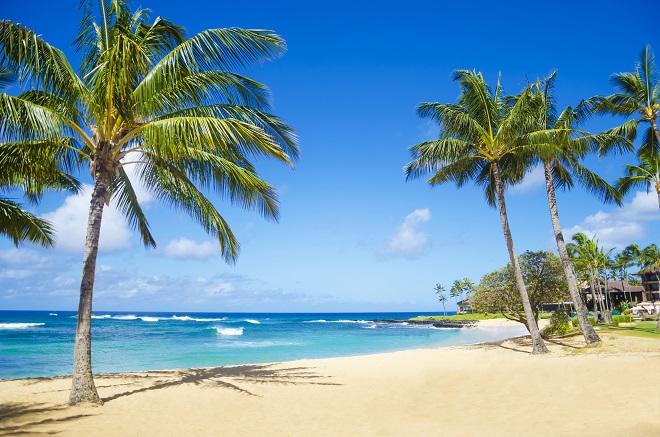As you get ready to hail a toast-worthy moment this year, some deliberation should go into the choice of the sparkling wine that goes into the glass you’re holding in your hand. The wine you select will immortalize the occasion almost as much as the words you choose, so make sure you understand the background of sparklers when you make your purchase. We can help with our piece – The Best Champagnes and Sparkling Wines for Celebrations.
Some Fun Facts about Sparkling Wine
- Each wire cage is sealed with 6 ½ twists
- There are 4-6 atmospheres of pressure in a Champagne bottle while there are 2.4 atmospheres of pressure in a car tire
- There are 49 million bubbles in a bottle of Champagne
- The making of sparkling wine was a happy accident
- The “coupe” Champagne Glass was modeled after Marie Antoinette’s left breast
- Famous Champagne quotes; “Remember Gentlemen, it’s not just France we are fighting for. It’s Champagne!” W. Churchill “I drink Champagne when I win, to celebrate…and I drink Champagne when I lose, to console myself” N. Bonaparte
Some Production Background
Although there are hundreds of dozens of different sparklers, made from many grapes grown in different regions of different countries, there are really only two mainstream options; Classic or Tank Method.
Classic
The classic method, or Méthode Champenoise (France), Metodo Classico (Spain), Metodo Tradizionelle (Italy) is predicated on the double fermentation of wine, aging the wine sur lie (on the spent yeast cells; the lees) and completing a seven-step process to create a sparkling wine rich in toast notes, biscuit, and brioche. (We’ll detail the production process in future blogs).
A match made in heaven for brunch or an elegant seafood dinner, this is the method of making all Champagne, Crémant, Cava, and any wine that includes the classic method or one of its many translations.
Tank


Producers developed the Tank or Charmat Method to save time and money and to allow for broader production of sparkling wines. It was first used in 1895 by Federico Martinetti in Asti Italy in the northern region of Piedmont. Frenchman Eugene Charmat streamlined and patented the process in 1907, and eponymously attached his name to the practice. A side note to explain the amount of volume that we’re dealing with. Charmat tanks can hold up to 9950 liters, which will produce over 13,000 standard (750ml) bottles.
The result is a crisp, clear wine with just the fruit showing and none of the nuances of the yeast. This isn’t entirely a bad thing, it’s just different. Because the secondary flavors aren’t there, tank method sparkling wines are sweeter with a higher liqueur d’expédition concentration added.
Dosage and Sweetness levels of Sparkling Wines
As you peruse your way down the sparkling isle in your favorite store, you’ll come across a couple of terms you need to be familiar with. Dosage, or the adjustment of sugars before bottling to enhance sweetness, and then of course the Sweetness Level. We’ve provided the common chart so you can refer to it at your leisure.
- Brut Nature – less than 3g sugar/litre – Bone Dry
- Extra Brut – 0 to 6g sugar/litre – Very Dry
- Brut – less than 12g sugar/litre – Dry
- Extra Dry – between 12 to 17g sugar/litre – Off-dry
- Sec – between 17 to 32g sugar/litre – Semisweet
- DemiSec – between 32 to 50g sugar/litre – Sweet
- Doux (Sweet) – more than 50g sugar/litre – Very Sweet
Sparkling Wines Around the World
France
-


Montagne de Reims, France Champagne: 3 major regions are Reims, Vallée de la Marne, and Côte des Blancs. The only 3 grapes allowed are Chardonnay, Pinot Noir, and Pinot Meunier. Some of the best villages are Reims, Ay, Verzenay, Epernay, and Oger. Grand Cru is the epitome of fine Champagne and almost always produced by a Grower rather than a Négociant. Out of 450+ Houses that make or sell Champagne, a mere 17 are Grand Cru. Mailly, DeMargerie, and Roederer are some of our favorites with the first two being Grand Cru.
- Crémant de Bourgogne – Burgundy: Made like the stuff from Champagne, just with Chardonnay and Pinot Noir and for a great deal less. Some that strike a chord with us are Louis Bouillot, Dom de Montbourgeau L’Etoile Savagnin, and Dom Des Chambris.
- Crémantd’Alsace – Alsace: Usually Pinot Blanc or Pinot Noir, a few samplings of Riesling and Auxerrois can be found with excellent results.
- Crémant de Loire – Loire Valley: Chenin Blanc and Cabernet Franc do the honors with slightly more acidic, food friendly sparkling wine.
Spain
- Cava – Catalonia in the Penedés appellation. All made in the classic method with the Macabeo, Parellada, and Xarel-lo grapes. All crisp and clean and leading to a finished product of the same qualities. Cava means cave or cellar and you can find some stellar wines for less than $20. Codorniu and Freixenet are the two wineries who started making Spanish sparkling wine.
Italy
- Asti – Piedmont in the north. Once known as Spumante, the Moscato grape was turned into inexpensive bubbly that was also quite sweet. This is untrue now, as crisper and drier Asti’s are all the rage.
-


Valdobbiadene – Italy. Prosecco – Veneto in the northwest. Now so famous that the Glera grape is now known as the Prosecco as is the appellation where they produce the wine. While many examples are readily found, the price of the wine has risen despite the manufacture using the Charmat Method. Valdobbiadene is a DOCG (highest rating in Italian wine hierarchy) and you can find inexpensive sparkling wine from Borrasco and Mionetto.
- Franciacorta – Lombardy in the central north. Another DOCG for sparklers, but this appellation requires the classic method of production. Grapes include the Chardonnay, Pinot Nero (really just Pinot Noir in Italian), and Pinot Bianco (aka Pinot Blanc). Good examples rival Champagne prices, but deals are out there. Reserve Franciacorta wines by requirement spend 60 months (5yrs) on the lees.
USA
- California – Many French Champagne Houses have set up shop in Sonoma and Napa valleys with a great deal of success. Grapes used are Chardonnay and Pinot Noir. Roederer, Mumms, Chandon, and Krug all have California Vineyards and Wineries. Korbel in Sonoma County is also a proven producer.
-


Keuka Lake, New York New York State – What is best about Finger Lakes sparklers is the grapes they use! They don’t shy away from Gewürztraminer or Riesling. This gives a wonderful amount of acidity and a natural touch of sweetness. Dr Konstantin Frank is a splendid example from Keuka Lake. Bellangello makes a Gewürtz from Seneca Lake. The area also produces some fantastic Ice Wine, but that’s another story.
- New Mexico – Yeah, that’s right! I said “New Mexico”. Jacqueline Leonne makes a highly rated Brut, Rosé, and Semi Sweet Sparkling Wine out of New Mexico that Vivino rates in the top 3% of wines in the world. The wine has garnered 90+ points from Wine Enthusiast and Beverage Dynamics. And they are all under $20!
Safely Opening a Bottle of Bubbly
The pressure in a bottle of Champagne, Prosecco, Asti Spumante, Cava, or Cali sparkling wine can reach 3x that of a car tire. It can dispel a cork over half a football field at 25 mph. “You’ll shoot your eye out” isn’t just wise advice for the ‘official Red Ryder carbine action, 200 shot, range-model air rifle with a compass in the stock’ weaponry. You can do some damage with a wayward sparkling cork. Be Cautious!
This is a non-formal approach to opening a bottle safely and without pomp and/or circumstance. If you want the cheese added to your presentation, you can find it at guildsomm.com or any service and hospitality website. We’re going bare bones here.
- Properly chill the wine. 45ºf is as low as it should be. 50°f is best for a good to great bottle as it will show the flavors better. If you do not intend to use the bottle at first pour, (5 glasses or more if it’s just a toast) then a chilling sleeve or an ice bucket is necessary.
- Cut or remove the foil from around the cage or you can loosen the cage with 6 ½ twists of the loop at the cage’s bottom and remove foil and cage all at the same time.
- As SOON as you remove the cage, cover the cork with a bar towel or kitchen towel to prevent accidental discharge. Note that this is time to prevent ‘aiming the bottle’ at a loved one (or hated one). Discard the cage and foil.
- Grip the towel around the cork with one hand and slowly rotate the bottom of the bottle with the other. The key is to SLOWLY remove the cork from the bottle using only the internal pressure of the carbonated wine with as little noise as possible. This prevents loss of CO2, which is the whole reason we drink the stuff to begin with.
- Pour and ENJOY! Remember, the bubbles will climb the glass fast. Pour slowly, as you can always top off later.
Final Thoughts
There are many ways to turn a phrase of praise, exhilarate a loved one, or usher in a brand-new year. There are almost as many sparkling options in which to enjoy the moment. We hope we’ve offered some valuable suggestions and proffered some whimsical advice and trivia in our blog – The Best Champagnes and Sparkling Wines for Celebrations.
As always, your selections are ultimately your own. We just want to fuel the thought process with as much ammunition as we can. If you don’t see something here you want us to cover, feel free to reach out to us directly through our Contact page or leave a comment below. Cheers!


Bob is a Certified Sommelier from Court of Master Sommeliers and a Cicerone Certified Beer Server, but most importantly has been in the restaurant and commercial sales (wine, spirits and beer) industry for over 25 years, bringing a wealth of professional knowledge to The 55 Lifestyle and to our readers.
The 55 Lifestyle is a participant in the Amazon Services LLC Associates Program, an affiliate advertising program designed to provide a means for sites to earn advertising fees by advertising and linking to Amazon.com.









